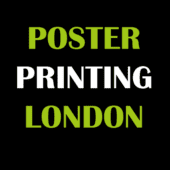Demystifying Poster Presentations: A Comprehensive Guide
Introduction: Poster presentations are a common fixture in academic conferences, professional gatherings, and research symposiums. They offer a platform for scholars, researchers, and professionals to showcase their work, share insights, and engage with peers in a visual format. Despite their prevalence, many individuals may find the prospect of preparing and delivering a poster presentation daunting. This article aims to demystify the process of creating and presenting a poster, providing a comprehensive guide for both newcomers and seasoned presenters alike.
Understanding Poster Presentations: A poster presentation is a visual representation of research findings, project outcomes, or scholarly work displayed on a large poster board. Typically, these presentations consist of a combination of text, graphics, tables, and images arranged in a concise and visually appealing manner. The goal is to effectively communicate key points and findings to an audience in a clear and engaging format.
Components of a Poster Presentation:
- Title: A concise and descriptive title that captures the essence of the research or project.
- Introduction: An overview of the topic, research question, objectives, and significance of the work.
- Methods: Description of the methodology or approach used to conduct the research or project.
- Results: Presentation of key findings, data, and outcomes.
- Discussion: Interpretation of results, analysis, implications, and future directions.
- Conclusion: A summary of the main findings and the overall significance of the work.
Tips for Creating an Effective Poster:
- Keep it concise: Avoid overcrowding your poster with excessive text. Use bullet points, short sentences, and visuals to convey information succinctly.
- Visual appeal: Use high-quality images, graphs, and charts to enhance visual interest and clarity. Choose a cohesive color scheme and layout for a professional look.
- Clarity and organization: Arrange content in a logical and easy-to-follow sequence. Use headings, subheadings, and clear labels to guide the viewer through the poster.
- Practice readability: Ensure that text is legible from a distance. Use appropriate font sizes and styles for headings, subheadings, and body text.
- Engage with your audience: Be prepared to discuss your poster and answer questions from viewers. Practice a brief and engaging verbal presentation to accompany your visual display.
Conclusion: Poster presentations offer a valuable opportunity to share research findings, collaborate with peers, and gain visibility in academic and professional circles. By following the guidelines outlined in this article, individuals can create compelling and effective posters that effectively communicate their work to a diverse audience. Whether you’re a novice or an experienced presenter, mastering the art of poster presentations can enhance your ability to disseminate knowledge, spark discussions, and make meaningful contributions to your field of study.
